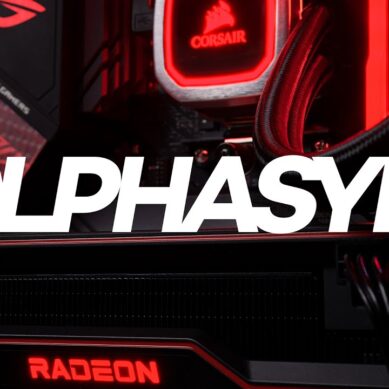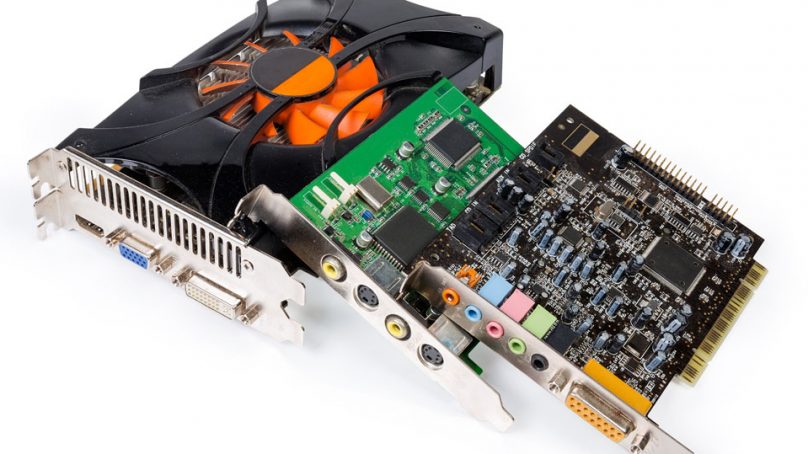Capturing video content at 4K requires some serious hardware. You need to record four times as many pixels in the same amount of time, while minimising lag and preventing any weird buffering glitches from creeping in. Thankfully, devices capable of recording in ultra-high definition are now widely available at close-to-affordable rates. At the moment, there are around five options – each of them with strengths and weaknesses. Let’s take a look at them.
+ Superior software
+ 140 Mbps bitrate via PCIe
– No HDR
Elgato is one of the biggest names in the video-capture business, and this card sits at the top of its current line-up. It slots into a spare PCIe slot on your PC’s motherboard, and will consume four lanes (rather than the one eaten up by its predecessor, the HD60 Pro). But unlike the HD60, there’s no H.264 encoder or master copy, so your computer will need to do the actual encoding, which will place more strain on your machine. Moreover, if you’re streaming, you’ll have to record the signal you’re putting out there, which might mean downscaling the image in software.
Elgato’s card doesn’t handle HDR, which might be a deal-breaker for some. That said, this shortcoming may be addressed via a future software update – and the other features offered by this card make it among the leading candidates for those looking to capture gameplay footage in 4K.
+ Affordable
+ 4k60 pass-through
– USB bandwidth limits recordable frame rate to 30
This device is limited by the USB bandwidth; it’ll pass through a 4K60 image, but it’ll only record at 30fps. If you want to record HDR information, you’ll need to dial back the resolution to 1080p. As such, it’s not quite up to the level of the LG4K, which we’ll address in a moment.
Slightly down the pecking order from this card is the Live Gamer Extreme 2 or the LiveGamer Portable 2 Plus, both of which are capable of passing through a 4K signal but not capturing it. As such, they don’t qualify for a slot in this round-up – but they’re still worth thinking about if you’re budget conscious and only want to enjoy 4K gaming while you’re playing.
+ HDR Recording
+ RGB Lighting
– Limited to Nvidia cards
The LiveGamer 4K is capable of capturing HDR details – that’s the information that sits behind the image, powering the HDR backlight found on compatible monitors and televisions and ensuring an image closer to what the human eye can appreciate. It also offers something called SDR tone mapping, which allows you to play in HDR while capturing in SDR. Given that playing an HDR signal through a non-HDR display can sometimes result in a lack of colour vibrancy, this is an option that may prove useful.
If you’re willing to dial down the resolution to 1440p or 1080p, you’ll find that the maximum frame rate goes up beyond 60fps, to 144 and 240 – that’s if your display can keep up. The card also comes with three separate preset RGB lighting modes, and it will lend the interior of your case a little extra glitz. You’ll also be able to use AVerMedia’s Gaming Utility to downscale resolutions and frame rates, allowing you to assess the recording quality without the need to connect a second monitor. There’s also a fully-featured 4K editing program thrown in for good measure.
The LG4K doesn’t support AMD cards if you’re going to be recording at 4K, HDR or higher frame rates, and you’ll need enough graphical horsepower available to drive it at those super-high resolutions.
Magewell Pro Capture HDMI 4K Plus LT
+ Separate loop-through removes need for splitter
+ Video signal can be routed to different software internally
– Very expensive
Magewell is a company whose products have proven consistently popular. They lack the flashy packaging sported by many of the entries to this list, but they’ve got more than enough functionality to make up for it. This high-end card is so-named thanks to its loop-through function, which allows users to simultaneously stream and record without the need for a splitter. The card allows you to route the signal to several different software applications at the same time, which might be useful for certain workflows.
The USB option is available, but the bandwidth limitations mean that you’re only going to be capturing 1080p60 – but you’ll have the full 4K image passed through. For this reason, PCIe is the way forward if you want maximum pixels recorded. The price of this card puts it beyond the reach of most gamers, but if you’re capturing video professionally, the extra expenditure might well be worthwhile.
+ Very small
+ Simple to use
– Lacks any passthrough
Being USB-based, this device can’t capture more than 30 frames per second at 4K. Moreover, it doesn’t have a passthrough, which means you’ll need a splitter and a separate monitor to play the game while you’re recording. Now, while the PS4 Pro isn’t capable of going much higher than this anyway, Xbox One X users might find this limitation frustrating.
Where this unit shines is its simplicity; there’s no additional software to install beyond the program you’re using to stream. The passthrough is just about lag free even at the higher resolution, which means there’s no need for extra cabling or splitters.
For most gamers who are playing in 4K, the big decision will be between a PCIe-based card and an external USB one. If you’re not comfortable cracking open your PC’s case and slotting in the card, then we can understand why the latter might appeal. However, given that four lanes of PCIe can deliver speed far in excess of those possible via USB 3.0, it’s difficult to make any other recommendation than a PCIe card – provided, of course, that your wallet allows for one.
Bear in mind that your PCIe slot may share bandwidth with other components in your case, notably your graphics card, so check that your motherboard can accommodate your card-of-choice before strapping it in.







